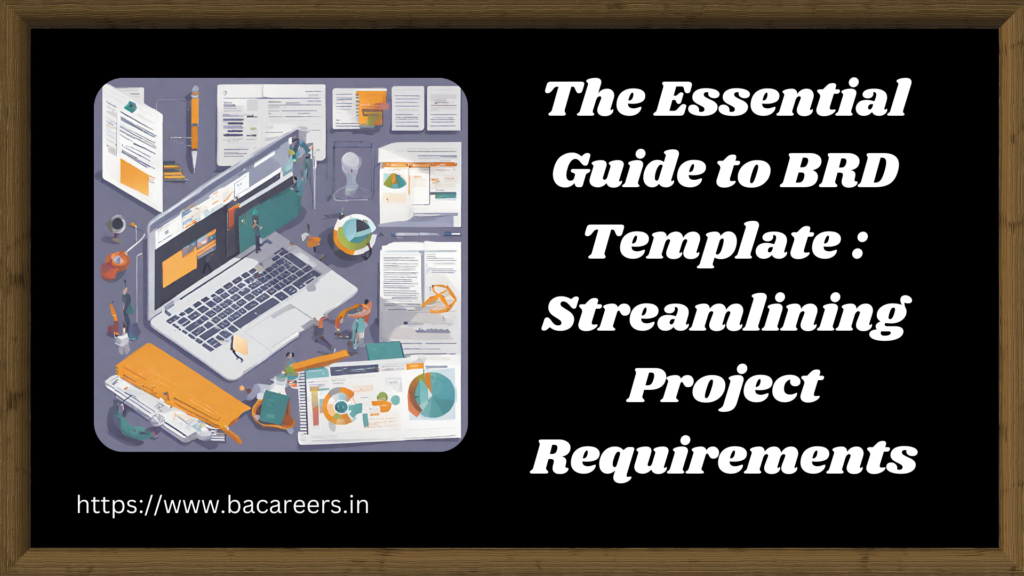In the realm of project management, success often hinges on clear communication and thorough documentation. Bridging the gap between client expectations and project outcomes requires a robust framework for capturing, organizing, and communicating requirements. Enter the Business Requirements Document (BRD) template, a powerful tool that serves as the cornerstone of successful project execution.

Understanding the BRD Template:
The BRD template is a comprehensive document that outlines the objectives, scope, functional specifications, and constraints of a project. It serves as a roadmap for all stakeholders involved, providing a unified understanding of what needs to be achieved and how it will be accomplished.
Key Components of a BRD Template:
- Introduction: This section provides an overview of the project, including its purpose, scope, and objectives. It sets the stage for the rest of the document and ensures alignment among stakeholders.
- Project Scope: Here, the BRD outlines the boundaries of the project, including what is included and excluded. It helps prevent scope creep and ensures that all parties have a clear understanding of the project’s limits.
- Functional Requirements: This section details the specific functions and features that the project must deliver. It breaks down the desired outcomes into actionable items, providing a roadmap for development and implementation.
- Non-Functional Requirements: In addition to functional aspects, the BRD also addresses non-functional requirements such as performance, security, and usability. These criteria are essential for ensuring that the final product meets the desired quality standards.
- Assumptions and Constraints: Every project operates within certain constraints and assumptions. This section identifies these factors upfront, helping to manage expectations and mitigate risks throughout the project lifecycle.
- Dependencies: Projects rarely operate in isolation. The BRD template highlights any dependencies on external factors or other projects, ensuring that these dependencies are accounted for in the planning and execution phases.
- Acceptance Criteria: Clear criteria for project acceptance are essential for ensuring that the final deliverables meet stakeholders’ expectations. The BRD outlines these criteria, providing a benchmark for success.
Benefits of Using a BRD Template:
- Clarity and Alignment: By clearly documenting project requirements, the BRD ensures that all stakeholders are on the same page regarding project objectives and deliverables.
- Risk Mitigation: By identifying assumptions, constraints, and dependencies upfront, the BRD helps project teams anticipate and mitigate risks before they become issues.
- Efficiency: A well-defined BRD streamlines the development process by providing a roadmap for implementation. This reduces rework and accelerates project delivery.
- Communication: The BRD serves as a communication tool, facilitating dialogue between project teams, clients, and other stakeholders. It provides a common language for discussing project requirements and progress.
- Documentation: In addition to guiding project execution, the BRD also serves as a valuable reference document for future phases of the project and for audits or compliance purposes.
Tips for Creating an Effective BRD Template:
- Collaboration: Involve all relevant stakeholders in the creation of the BRD to ensure that it accurately reflects their needs and expectations.
- Clarity and Precision: Use clear and concise language to avoid ambiguity and misinterpretation. Each requirement should be specific, measurable, achievable, relevant, and time-bound (SMART).
- Flexibility: While the BRD provides a roadmap, it should also allow for flexibility to accommodate changes and updates as the project progresses.
- Validation: Regularly review and validate the BRD with stakeholders to ensure that it remains aligned with their evolving needs and priorities.
- Version Control: Implement version control mechanisms to track changes to the BRD and ensure that all stakeholders are working from the most up-to-date version.
In Conclusion:
A well-crafted BRD template is indispensable for successful project execution. By capturing and documenting project requirements in a clear and structured manner, the BRD facilitates communication, mitigates risks, and accelerates project delivery. Whether you’re embarking on a new project or refining an existing one, investing time and effort into creating a comprehensive BRD is a worthwhile endeavor that can yield substantial dividends in the long run.
Important Articles :
- Crafting an Effective Business Requirement Document
- FRD : Crafting a Comprehensive FRD : A Step-by-Step Guide
- Unlocking Insights: The Art of Interviews in Elicitation Techniques
- The Role of a Business System Analyst: The Bridge Between Business and Technology
- The Synergy of Automation and Testing

Business Analyst , Functional Consultant, Provide Training on Business Analysis and SDLC Methodologies.
